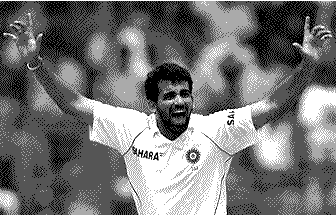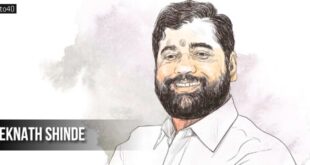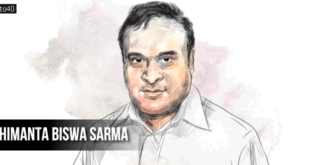 Zaheer Khan (born 7 October 1978) is an Indian cricketer who has been a member of the Indian cricket team since 2000.
Zaheer Khan (born 7 October 1978) is an Indian cricketer who has been a member of the Indian cricket team since 2000.
A left arm Fast bowler considered as the spearhead of the Indian bowling attack, Zaheer is known for his ability to swing the ball both ways, and as a batsman also holds the record for the highest Test score by a No. 11. After leading the Indian pace attack for much of the early 2000s, recurring hamstring injuries in 2003 and 2004 forced him out of the team, and after returning for a year, he was dropped again in late 2005. Strong performances on the domestic circuit have seen him recalled to the team as its leading pace bowler.
Zaheer was selected in 2000 for the first intake of the National Cricket Academy in Bangalore, He made his Test debut against Bangladesh at Dhaka and ODI debut against Kenya at Nairobi during the ICC KnockOut Trophy in the same year.
In late 2005 pacemen Shanthakumaran Sreesanth and R. P. Singh made their international debuts and became regular members of the Indian team making it difficult for Zaheer to retain his position in the playing eleven. The Board of Control for Cricket in India demoted Zaheer from a B-grade to a C-grade contract at the end of the year.
He returned for the 2006 tour of Pakistan, where India fielded three left arm pacemen and had difficulty dismissing Pakistan with a lack of variety in the bowling attack. Zaheer, with inferior results to those of Irfan Pathan and Singh, was dropped.
In Indian domestic cricket, Zaheer made his name playing for Baroda, but transferred to Mumbai at the start of the 2006-07 Indian cricket season his debut for Mumbai until the final of the Ranji Trophy in which he took 9 wickets as Mumbai defeated Bengal.
In 2006 Zaheer signed for Worcestershire County Cricket Club as their second overseas player as a replacement for Australian Nathan Bracken. He became the first Worcestershire player to take 10 wickets in a match on debut for over 100 years against Somerset, even though Worcestershire eventually lost the game. In June 2006 he took the first nine wickets to fall in the first innings against Essex, ending with 9-138; had wicket-keeper Steven Davies not dropped a catch offered by last man Darren Gough he would have become the first bowler ever to take all ten for the county.
In late 2006, Zaheer was recalled to the Test and ODI team for the tour of South Africa, following a form slump to Baroda team-mate Irfan Pathan and injuries to Munaf Patel. After consistent performances on tour, his performance in early 2007 in home ODIs against the West Indies and Sri Lanka, including a career best 5/42, saw him named in the squad for the 2007 Cricket World Cup. He is moulded on the likes of Wasim Akram and Chaminda Vaas, though not as successful as they are.
He won the Man of the Match award in the first test between India and Australia, at Bangalore, in the 2008-2009 series for his all round performance with the bat and the ball. He became the third Indian, after Rusi Surti and Kapil Dev, to score a half century and take five wickets in an innings in the same match against Australia. He has since become the strike-bowler and a permanent fixture in the Indian team. Zaheer also won the Man of the Match award in the T20 World Cup 2009 against Ireland for taking 4 wickets by giving only 19 runs.
Khan is currently tied with James Anderson of England at No.4 in ICC Test bowlers ranking.
At 21, the left-armer made a big move when he sacrificed a career in engineering to pursue one on the cricketing field. Zaheer started playing for Baroda in 1999 and only a year into domestic cricket, he was called up to the Indian side. He made an impressive start against Kenya in the ‘ICC Knockout Trophy’, picking up 3 wickets on debut and was brilliant throughout the tournament, playing a major role in India’s road to the final. He was immediately inducted into the Test side and thereafter became a regular fixture in the Indian squad. A brilliant 2002 season, capped by 89 wickets, announced his arrival on the international stage. Though in 2003-04, a hamstring injury which was later found out to be a nerve-twitch, hampered his progress. The selectors continued to rest their faith in him but form and fitness combined with the emergence of competition like Sreesanth and RP Singh, meant that he wasn’t assured of a place in the side anymore.
Zaheer’s tumultuous tale reached its climax in 2006 when he was dropped after the Pakistan series and was demoted to a C-Grade contract by the BCCI. He then came up with a befitting reply, prizing 78 wickets for Worcestershire, forcing his way back into the Indian team. A leaner, fitter ‘Zak’ emerged with a shortened run up and a moulded bowling action to lead India’s attack with renewed vigour. His fight-back began in South Africa and was followed up by a historic Test series triumph in England where he ended up as the highest wicket-taker.
With his perfect seam action and his ability to swing the ball both ways, Zaheer is sort of a destructive bowler who any team would yearn to call their own. That coupled with his lethal reverse swing with the old ball explains why the Baroda lad has become one of the most feared bowlers in world cricket. Zaheer Khan with his current achievements is already an inspiration to young Indian quickies. But the speedster’s career is far from over. He dreams of going one step further to emulate the legendary Wasim Akram and for the lionhearted optimist that he is, even this herculean task is none too tall for him to conquer.
Highlights
- Zaheer Khan was named Wisden Cricketer of the Year in 2008.
- He is India’s most successful left-arm seamer and the third most successful in the World.
- In Tests, he is India’s most successful fast bowler after Kapil Dev.
- Zaheer became the third Indian bowler to take more than 150 Test wickets outside India.
- He was India’s highest wicket taker in the 2003 ICC World Cup.
- In county cricket, he became the first Worcestershire player to take 10 wickets in a match on debut for over 100 years.
- He was the highest wicket-taker in 2007, picking up an astonishing 81 scalps in Tests and ODIs combined.
- As of December 2010, his 75 against Bangladesh in 2004 was the highest Test score by a number 11 batsman.
- Against Australia in 2008, Zaheer became the third Indian after Rusi Surti and Kapil Dev to score a half century and take five wickets in an innings in the same match.
 Kids Portal For Parents India Kids Network
Kids Portal For Parents India Kids Network






